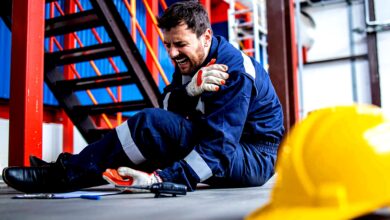Could Technology Prevent Future Rear-End Accidents? Investigating Avoidance Systems

Picture a society in which rear-end collisions are just a distant memory. A future in which technology rules and there are no more thrilling moments like slamming on the brakes in time to avoid running into the automobile in front of you. Guess what, though? You never know how near that future may be! This blog article delves further into collision avoidance systems and cutting-edge innovations that may avert rear-end collisions altogether. So buckle up and prepare for an incredible ride as we investigate how technology can transform our roadways and make fender benders obsolete!
Read More: Recovering Damages for Emotional Distress After a Car Accident
Collision Avoidance Systems: What Are They?
The goal of collision avoidance systems, often pre-crash safety or crash avoidance systems, is to prevent car crashes. These devices identify possible roadblocks or dangers using sensors, cameras, and radar technologies. They then notify the driver or control the car to prevent an accident.
How Do Systems for Avoiding Collisions Operate?
Advanced safety measures in cars that lessen crashes’ severity or prevent accidents are called collision avoidance or collision mitigation systems. These systems identify possible collision hazards using sensors, cameras, and algorithms. They then notify the driver or take independent action to prevent a collision.
The benefits and drawbacks of collision avoidance technology
One of its key benefits is that collision avoidance technologies significantly improve road safety. These systems may assist in preventing collisions of all kinds, including rear-end collisions, by continuously scanning the surrounding area and responding swiftly in case of danger.
Rear-end collisions are often the result of human mistakes, such as inattentive driving or slow response times. To lower the possibility of human error, collision avoidance systems use sophisticated sensors and algorithms to identify possible risks and notify the driver.
Real-World Instances of Effective Implementation
Volvo debuted its City Safety system in 2008; it employs radar and video technologies to identify possible accidents with cars ahead of the vehicle. The technology will automatically apply the brakes to avoid a rear-end accident if the driver does not react in time. Since then, this technology has been included in all new Volvo vehicles and has shown remarkable effectiveness in reducing rear-end collisions.
Technology’s Part in Preventing Rear-End Collisions
Technology is developing quickly and has been a major factor in reducing rear-end collisions. For many years, rear-end collisions have been a frequent cause of auto accidents, often ending in deaths or severe injuries. However, there is optimism that these kinds of accidents may be significantly decreased, if not eliminated, with the development of collision avoidance systems.
The primary use of technology in preventing rear-end crashes is the implementation of forward collision warning (FCW) systems. These systems detect items in front of the car using sensors like radar or cameras, and they notify the driver if the object is coming too fast. This allows cars to stop or make an evasive maneuver before a collision.
Difficulties and Barriers to Putting These Technologies into Practice
Before any new technology can be effectively used broadly, there will always be difficulties and roadblocks to overcome. A few crucial considerations might make it difficult for collision avoidance systems to be widely adopted.
1. Price:
The expense of putting collision avoidance systems into practice is one of the main obstacles. Complex sensors, cameras, and algorithms are often used in these systems, which may raise the cost of cars that have them installed. This implies that the usefulness of these cutting-edge safety features in minimizing rear-end incidents across all vehicles on the road will be limited since not all drivers can purchase automobiles with them.
2. The Coordination Necessity
To successfully prevent accidents, collision avoidance systems need cooperation between numerous cars. This implies that for these technologies to operate at their best, a significant portion of the vehicles on the road must be installed and operational at all times. These devices may not prevent rear-end collisions as effectively if only a tiny fraction of cars are equipped.
Read More: Common Injuries in Los Angeles Car Accidents
In summary
To sum up, technological developments have not only made life easier for us, but they also have the potential to improve road safety. The aim of developing and refining collision avoidance systems is to rear-end collisions and save a great deal of lives. Our drivers are responsible for accepting this technology and using it appropriately. These cutting-edge collision avoidance technologies can make rear-end collisions obsolete in the future with further development and use.











